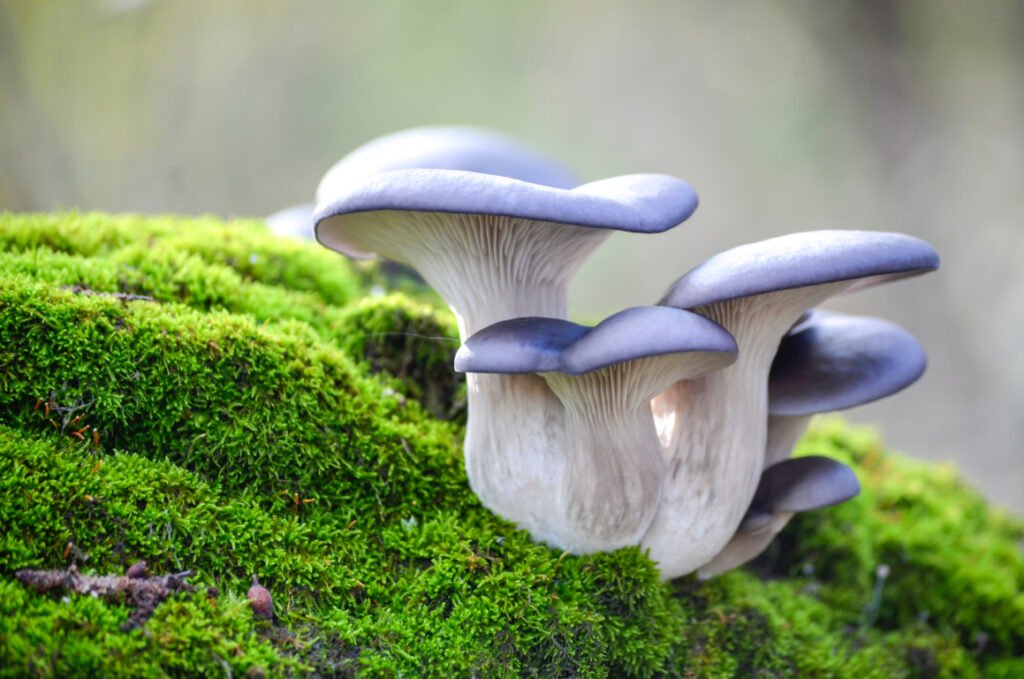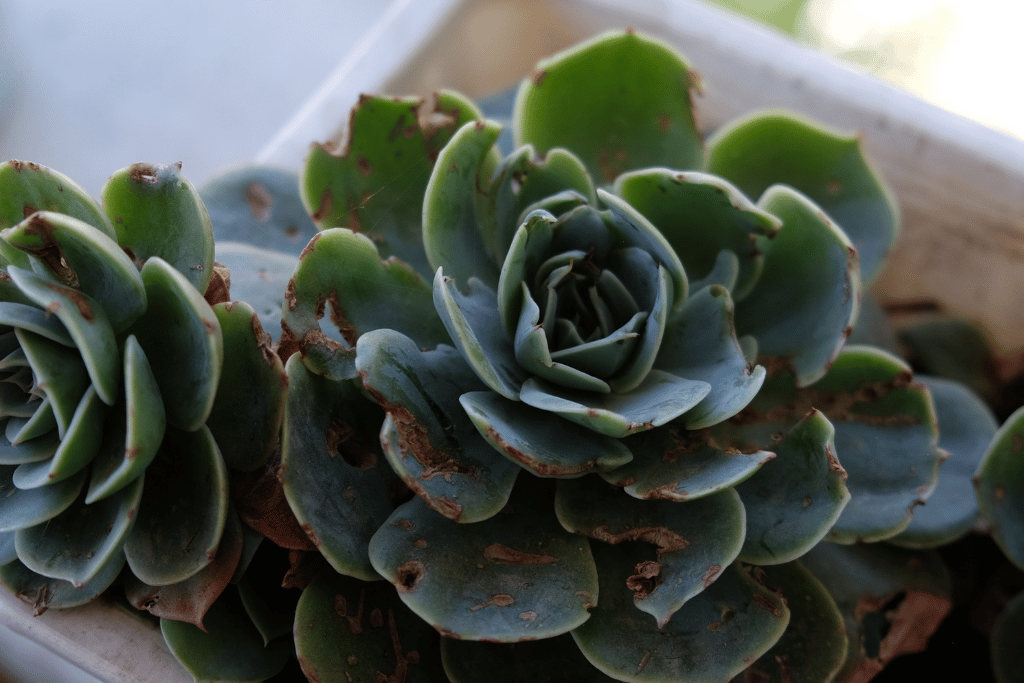
I can never forget the day I first saw my Hen and chick plant. It was a stunning succulent that caught my eye with its intricate shape and delightful rosettes, so much so that I knew it had to come home with me! You must be thinking that this precious little fellow now proudly stands in my garden as if it’s been there forever. But that’s not true.
Unfortunately, as time went on, my flourishing Hen and chick started to show signs of sickness. Its vibrant leaves began to fade into a pale yellow, while the soil became dry and crumbly beneath it.
I was in despair. No matter what I tried, the condition of my plant kept deteriorating before me until eventually becoming unrecognizable. Seeing everything unfold before my very eyes was heartbreaking.
For a moment, I considered discarding the plant, but it didn’t feel quite right. After all, we had been together for so many years that letting go would be too difficult. That’s why I chose to look into how to bring my unhealthy Hen and chick plant back to life.
Here’s what I learnt and followed to bring my little succulent back to life:
Signs of an Unhealthy Hen and Chick Plant
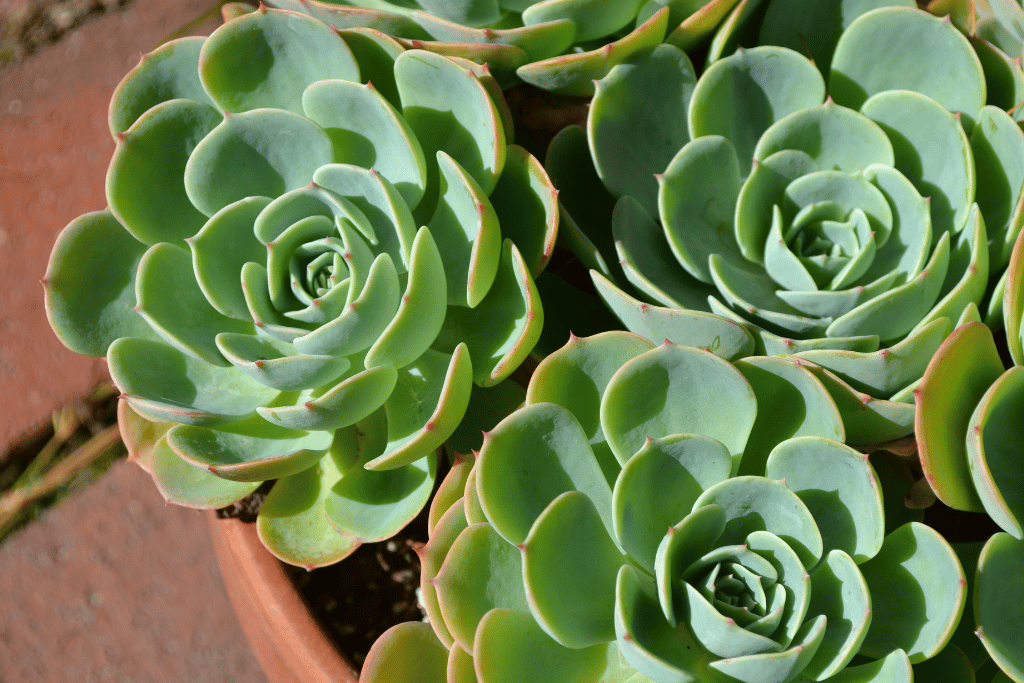
As a gardener, I’ve come to learn that every plant has its own unique personality, and my Hen and chick plant is no different. It may be small, but it has a way of letting me know when something’s not right. Here are some of the signs I’ve learned to look out for when it comes to an Unhealthy Hen and chick plant.
1. Shrinking or yellowing leaves
One of the first signs of an Unhealthy Hen and chick plant is a change in its leaves. If you observe the leaves turning yellow, wilting, or becoming smaller in size, it may signify that your succulent plant is not receiving sufficient water. They don’t require frequent watering but should be watered adequately every once in a while for them to thrive.
Since they are drought tolerant succulents, they can go for weeks without water (when mature). So, watering them once a week is adequate.
2. Mushy or brown leaves
In contrast, if the leaves of your Hen and chick are soggy or brownish, it may be a warning sign that you’re giving them too much water. These small plants don’t like getting saturated with moisture so make sure to not give them excessive water!
3. Poor growth
Are your Hen and chick plants developing slowly or seem stunted? Then, it could be an indication that they aren’t receiving enough sunlight. These thriving greens need significant amounts of bright yet indirect light to foster healthy growth – make sure the sun rays reach them!
4. Pests and diseases
Hen and chick, just like any other plant, can be vulnerable to pests and illnesses. Therefore, it’s wise to look for signs of spider mites or mealybugs that could potentially damage your plant. Also watch out for indications of disease such as black spots or mold – if noticed, it is best to remove the infected leaves in order to prevent it from spreading further.
5. Rotting roots
If the roots of your Hen and chick plant feel soft or mushy, it is an indicator of root rot. The common causes for this problem are overwatering, inadequate drainage, or soil that’s too heavy. To save your beloved plant, you must take it out from its potting mix and prune away all infected roots before repotting in fresh soil with excellent draining properties.
6. Deformed or misshapen leaves
If your Hen and chick’s leaves appear deformed, nutrient deficiency can be a culprit. If this is the case, provide a well-balanced diet – such as nitrogen, phosphorus and potassium – through regular fertilizing.
7. Falling apart or separating
Is the foliage of your Hen and chick plant starting to detach from its stem? This is a clear indicator that it’s going through some distress. This can be caused by improper soil, inadequate water supply, or being exposed to extreme temperatures. To save this precious plant, make sure you give it proper care in a suitable environment.
To sum it up, Unhealthy Hen and chick plant will provide you with plenty of warning signs before the situation gets serious. By noticing the leaves, growth rate, and pests around your plant, you can easily determine any issues early on so that you can take immediate action to restore its health.
In the next section, I’ll share the reasons for an Unhealthy Hen and chick plant.
Common Reasons For an Unhealthy Hen and Chick Plant
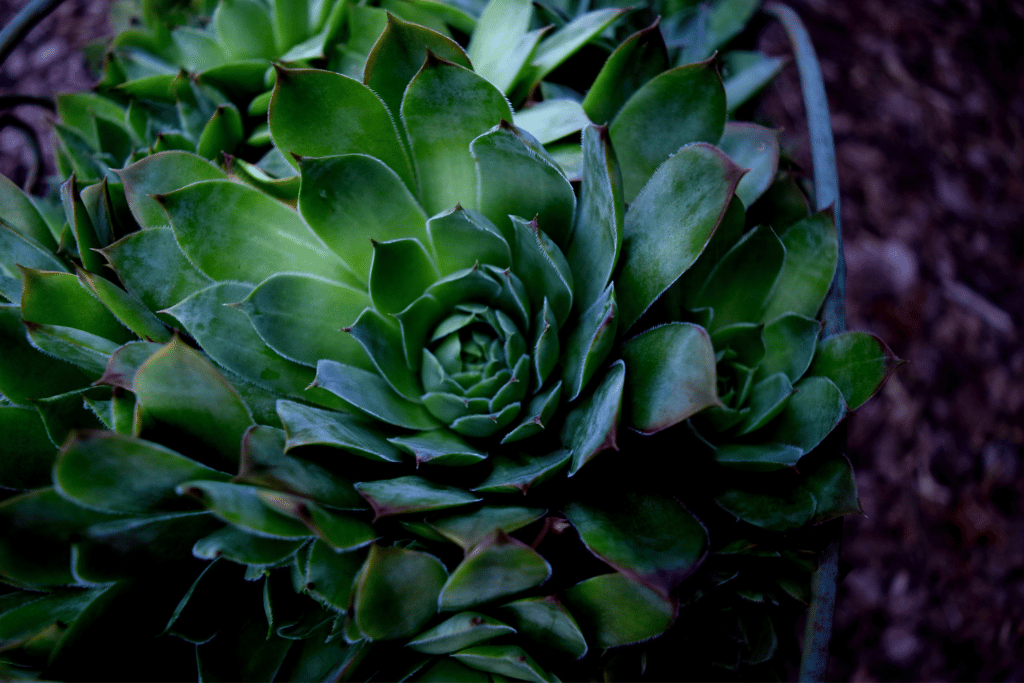
Here are some of the common reasons why my Hen and chick plant became unhealthy:
Despite their reputation as low-maintenance succulents, Hen and chick plants are still prone to various issues if not cared for properly. As an experienced gardener, I have firsthand experience with the consequences of inconsistent care. It all led to my plant getting unhealthy.
Let me take you on a journey of my experience with this plant and the reasons that contributed to an unhealthy Hen and chick plant. So that you can avoid it.
1. Overwatering
Little did I know, overwatering would be the downfall of my beloved Hen and chick plants. As succulents, these plants store water in their leaves and stems during dry times; therefore constant watering can cause root rot due to an overabundance of moisture in the soil; a deadly combination for any plant! Sadly, without realizing it at first, I had sent this little guy to a wet graveyard.
And, always remember that an overwatered unhealthy hen and chick plant will be soggy and soft to the touch.
2. Lack of sunlight
As I mentioned before, Hen and chick plants need lots of indirect light. They must be exposed to at least 6 hours of sunshine per day to flourish. Unfortunately, my poor little plant was located in a dim corner with very limited sunlight. It appeared miserable and wilted, no matter how many times I relocated it hoping for a better spot!
3. Poor soil drainage
Planting my Hen and chick plant in regular potting soil was a bad idea. It kept the moisture for too long that eventually made my little plant look wilted and weak. To keep them healthy, these plants need well-draining soils to not retain too much water; otherwise, their roots may begin to drown, leading to root rot and death of your precious hen or chick plant!
4. Too much humidity
One day, I kept my Hen and chick inside for too long and the air became overly humid. Before I knew it, its leaves were yellowing which indicated that something was wrong. These plants prefer their humidity levels at 30-50%. High levels of humidity can cause fungal diseases or the leaves may start curling due to too much moisture in the air – neither of which are optimal!
5. Pests and diseases
Just as with any other plant, Hen and chick plants are susceptible to pests and diseases. Recently, I spotted an infestation of tiny creatures on mine! Common bugs that plague these plants include aphids, mealybugs, whiteflies and spider mites; while root rot, fungal infections and powdery mildew can wreak havoc upon the health of a Hen and chick plant.
6. Too much fertilizer
Finally, over fertilizing is another frequent miscalculation made when caring for Hen and chick plants. At first, I thought my plant needed more sustenance so I started to feed it heavy doses of fertilizer. What a surprise that these plants don’t require much nutrition!
To promote healthy growth, you should only apply organic liquid fertilizer once or twice annually – any more than this can damage the leaves by causing them to burn, resulting in an unhealthy Hen and chick plant.
How I Brought my Dying Unhealthy Hen and Chick Plant to Life!
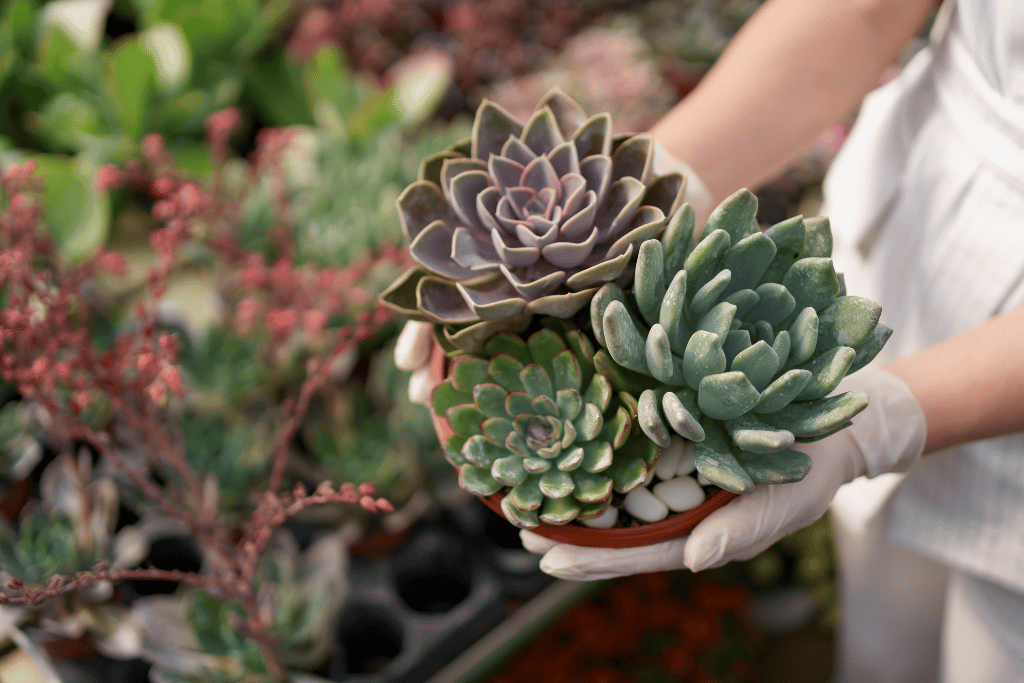
When I noticed my Hen and chick plant was sick, I was determined to nurse it back to health. While it turns out that some of my mistakes were responsible for its worn-down condition, I refused to give up on this little plant just yet! So, with a set of gardening gloves in hand and a watering can at the ready; I got down to work and fixed those common errors.
Here’s how I brought my dying unhealthy Hen and chick plant back to life!
1. Diagnosis: overwatering
The first thing I realized was that I had been overwatering my Hen and chick plant. Its leaves were turning yellow, and they were soggy to the touch. I knew I had to act fast to save my plant. So, I stopped watering it and let the soil dry out completely. It was hard to resist the urge to water it, but I kept telling myself that I was doing this for its own good. After a week or so, the soil was dry, and my plant was starting to perk up.
2. Treatment: adequate sunlight
Next, I inspected my plant’s location and realized it was in a dim corner, far away from the sun. So, I relocated it to an area with at least six hours of indirect light – and the transformation was amazing! The leaves became so much more vivid, standing tall instead of slouching down. It had clearly responded quickly to its new environment.
3. Soil care: better drainage
As I discovered, the soil I had originally used for my plant was not suitable due to its excessive retention of moisture, which caused root rot. Thus, I repotted it into a pot containing well-draining soil and added perlite to enhance drainage even further. Finally, my beloved plant was receiving the kind of nourishment that enabled prosperous growth!
4. Environment control: reduced humidity
After assessing the moisture levels around my plant, I discovered that the humidity was too high for optimal growth. Therefore, I relocated it to a space with more appropriate levels of humidity and reduced misting intervals. After only days of following this routine, I noticed that its leaves were healthier in appearance and resembled how they looked prior to inadequate air moisture.
5. Pest control: eliminating the monsters
A battle ensued when I discovered my beloved Hen and chick plant was under siege by hordes of mini beasts! My opponents? Aphids, mealybugs, and spider mites. Knowing that urgency was necessary to quell the infestation before it got too out of hand, I quickly whipped up an insecticide made from neem oil and water which I sprayed all over the plant. Confident in my creation’s potency, I repeated this remedy every several days until victory had been declared.
6. Fertilizer: the right amount
I realized that I was feeding my plant too much, so I began using an organic liquid fertilizer once every month instead. This new regimen took a load off the plant; it no longer had to bear the brunt of excessive nutrients causing its leaves to burn.
It wasn’t easy bringing my unhealthy Hen and chick plant back to life, but it was worth it. I learned a lot about what these plants need to thrive and what mistakes to avoid. With a little bit of love, care, and attention, I was able to turn my dying unhealthy Hen and chick plant into a thriving and vibrant succulent once and for all.
So you see, all you need to do is diagnose the issue, take action, and give your plants the right environment in order to revive a dying plant.
Conclusion
At the end of the day, you don’t have to drown in despair if you have an unhealthy hen and chick plant. Learn from my mistakes and also cater to the solutions I’ve provided above. In no time, you’ll nurse your sad looking plant back to health and it’ll be blooming in its fullest luster and glory.



